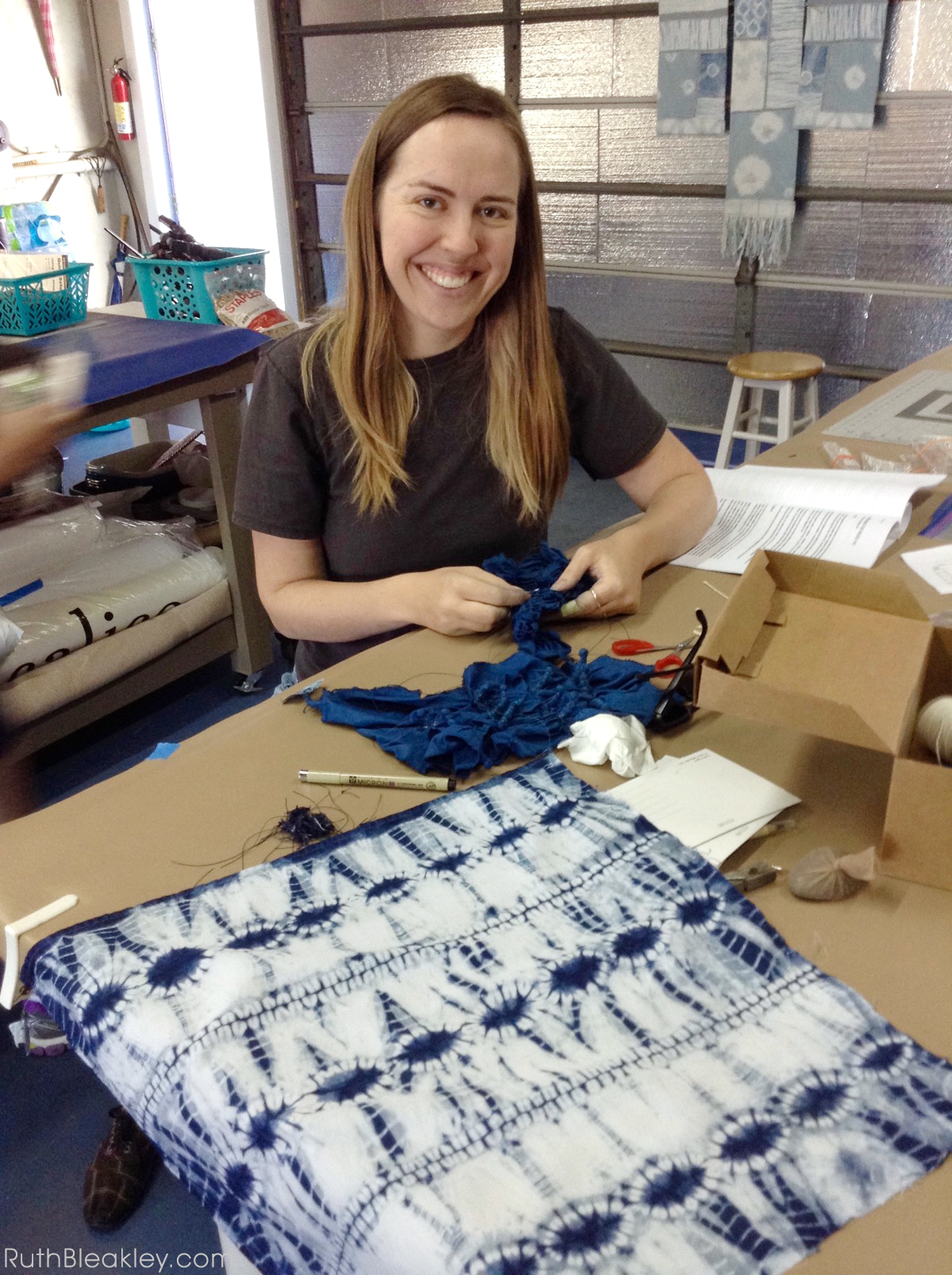 To celebrate my 33rd birthday on March 22nd, I made a special week-long trip to Aya Fiber Studio in Stuart, Florida to learn stitched Shibori tie dye from world-renowned fiber artist and author, Jane “Cali” Callender. Her book “Stitched Shibori” is not only gorgeous to look at; it also provides lots of practical instruction about one of my favorite fiber arts, Japanese Shibori tie dye. I’d never done any type of fiber art before this class (with the exception of a few forays into rubber band tie dye in Girl Scouts and summer camp) so this was a wonderful experience to challenge myself to learn something completely new and out of my tidy, paper-based, comfort zone.
To celebrate my 33rd birthday on March 22nd, I made a special week-long trip to Aya Fiber Studio in Stuart, Florida to learn stitched Shibori tie dye from world-renowned fiber artist and author, Jane “Cali” Callender. Her book “Stitched Shibori” is not only gorgeous to look at; it also provides lots of practical instruction about one of my favorite fiber arts, Japanese Shibori tie dye. I’d never done any type of fiber art before this class (with the exception of a few forays into rubber band tie dye in Girl Scouts and summer camp) so this was a wonderful experience to challenge myself to learn something completely new and out of my tidy, paper-based, comfort zone.
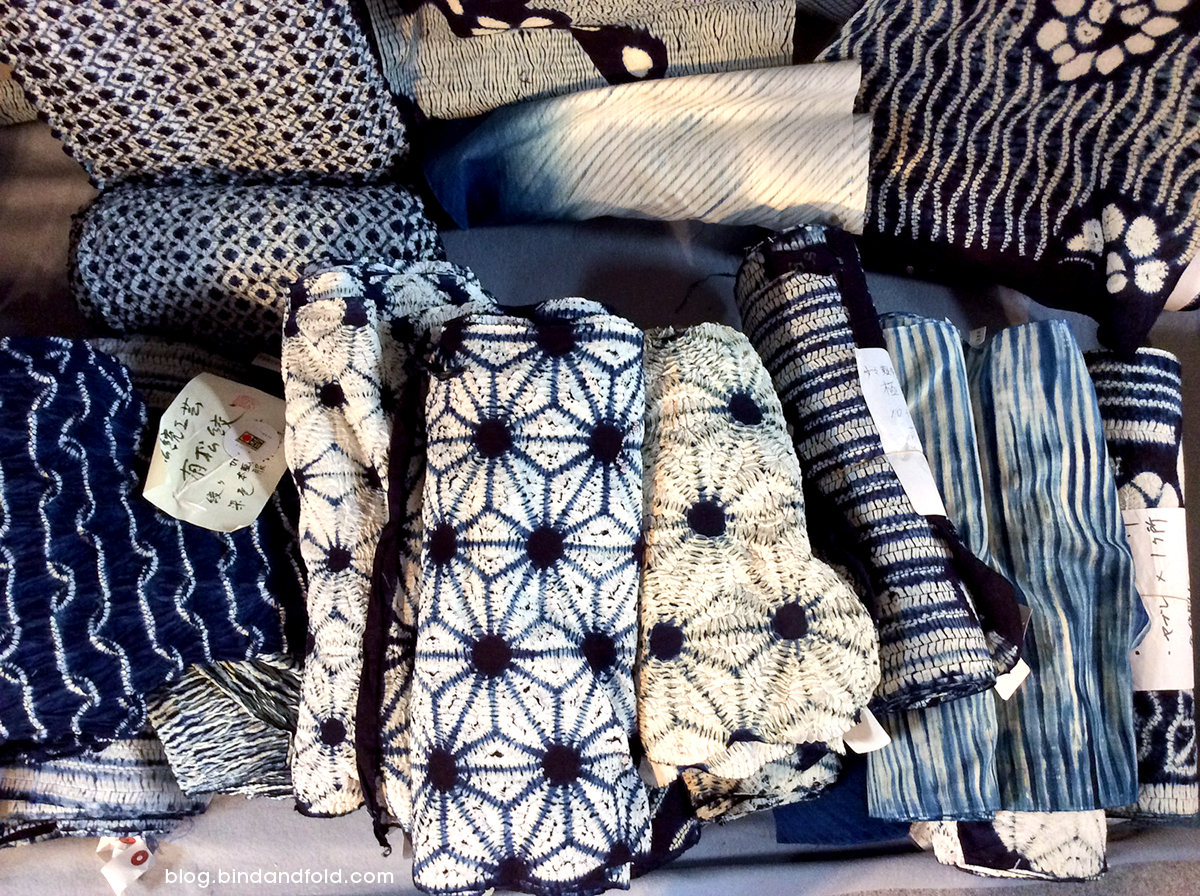
PHOTO CREDIT: Bind and Fold Blog, Arimatsu Shiboiri Festival (interesting read, too!)
Long before the hippies in the 60’s started getting creative with their Grateful Dead t-shirts, the Japanese were inventing new and beautiful ways to decorate their indigo-dyed fabrics with stitch-resist and binding techniques that they called “shibori”. You’re probably most familiar with indigo as the dye used for denim jeans. This deep, rich blue comes from the pigment extracted from the leaves of a plant that grows all over the world. The pigment is added to a fermenting vat to remove all of the oxygen. It then takes on a chartreuse color (underneath the deep blue skin on the top) and looks like witches brew. Fabric is dipped into the vat and it emerges BRIGHT GREEN and then over a period of 20 minutes or so turns deep navy. The more dips you do, the deeper blue, until the fabric is nearly black. The fabric has to oxidize completely between each dip so it’s a very labor intensive process. It stains your hands like crazy – I was wearing gloves as much as possible.
https://www.instagram.com/p/BhzjM1knSOc
https://www.instagram.com/p/BQvSIchFp_E/
The way I ended up at this course was a little bit roundabout…but it all worked out in the end!
I’ve always been a fan of Shibori tie dye and saw it first through the work of fiber artist Rachel Switzer of Cape Cod Shibori - she and I lived in the same small town in Cape Cod (shoutout to Woods Hole and Falmouth!), and I have several of her beautiful pieces – you can read about how I created journals using her fabric here: Book Cloth Workshop in Asheville and Cape Cod Shibori journals

You might remember a few years ago I was lucky enough (haha, saving my money had a little more to do with it than luck!) to attend Penland School of Crafts in the Smokey Mountains of North Carolina to learn Onionskin Binding from Benjamin Elbel. I still receive the Penland catalog every season, and flipping through it I saw this amazing piece of shibori fabricand immediately thought “I HAVE to take this class”. The class was taking place a week after my birthday, during the last week of March. I excitedly paid for my deposit…
Hooray! I was going to attend a shibori class!
Well fast forward a week or two and I received a letter in the mail about a week later from Penland giving me the sad news that the class was full and I had been put on a wait list! Booooo!
Given that I’d need to purchase airline tickets and book transport, there was no way I could make a waitlist situation work. I resigned myself to missing out, and decided to visit the instructor’s website anyway (just to see what I was missing out on? pity party? glutton for punishment).
BUT WAIT!…what’s that? Wow! The same instructor is teaching a class right here in Florida the week before? AND it’s my birthday week? AND I don’t have to pay for plane tickets or a rental car? Hooray for serendipity!Â
Needless to say I signed up right away for that class instead, so that’s what brought me to beautiful Stuart, Florida:
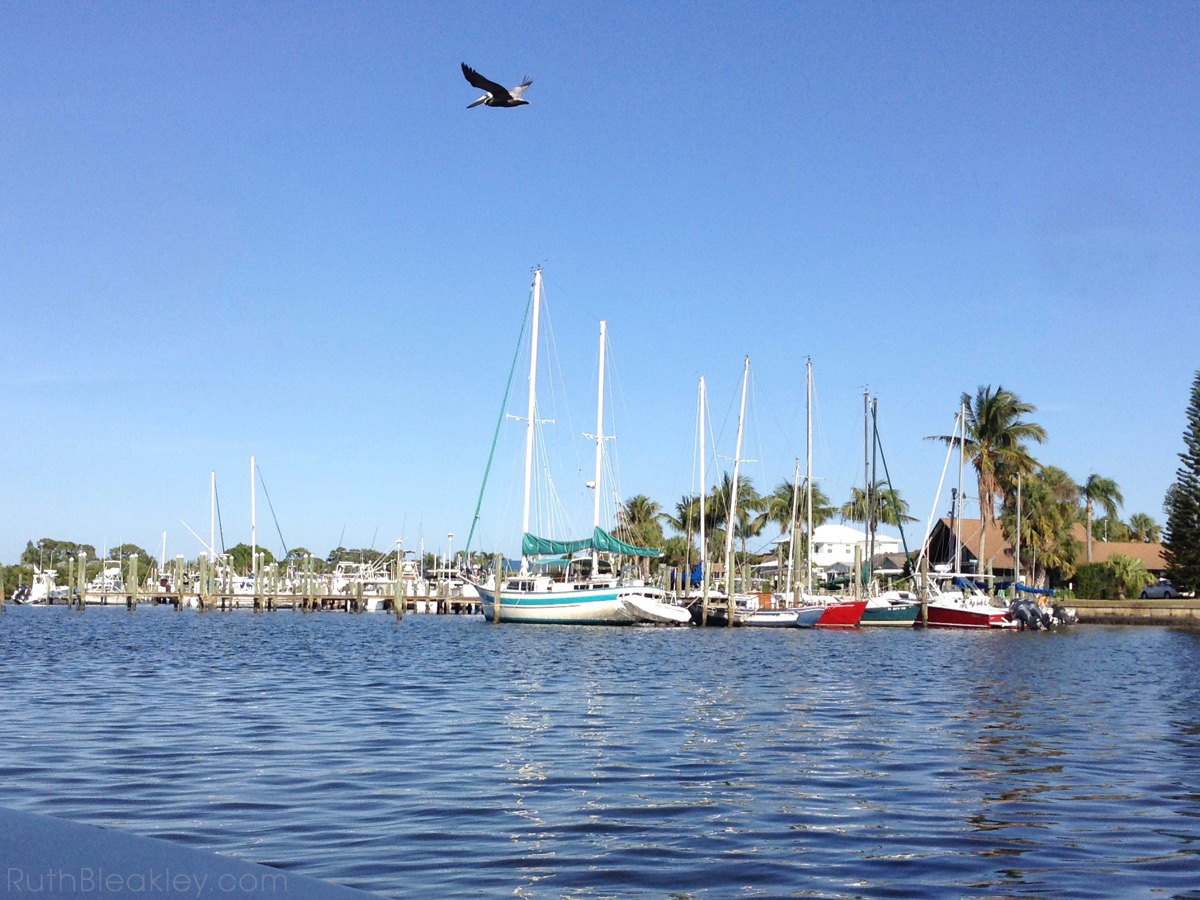
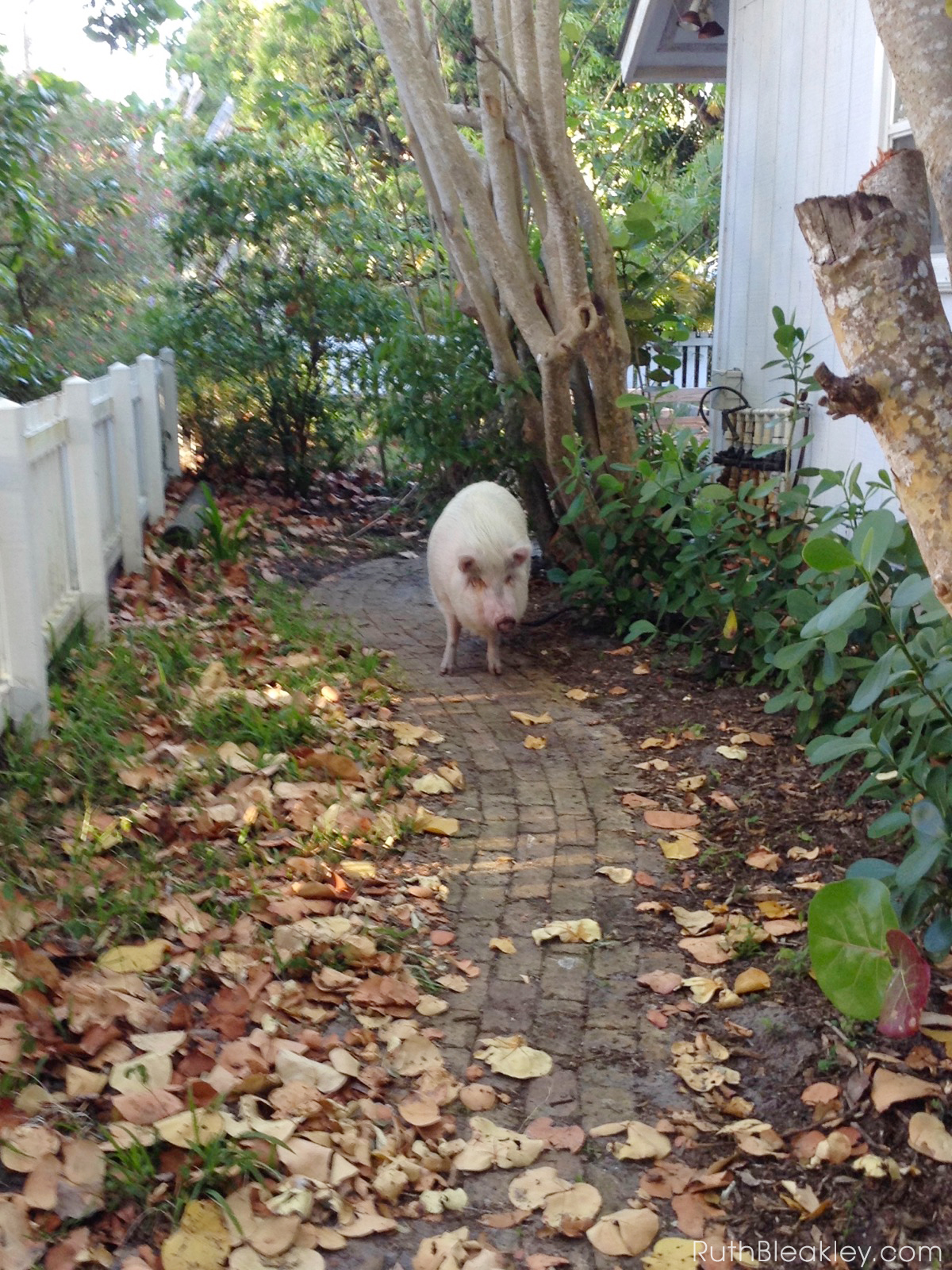
I’m not exaggerating though when I say my roommate was a real pig! Haha -meet Sid the Pig! Sid is a potbelly pig – “miniature” because she’s not 600lbs like an agricultural pig, but she still has quite a presence!
I stayed at a great AirBNB in Stuart called “Tropical Room near downtown and River” with charming hostess Rachel and her pet pig Sid. AirBNB is this website where people can rent out rooms in their house for you to stay in, or even their whole apartment or house. I just love having a whole quiet house to come back to after a day of travel or class rather than a boring hotel room. Another reason I love AirBNB is I prefer staying in a house in a safe and quiet neighborhood to staying alone in a hotel. I’ve used AirBNB happily since 2012 and have traveled all over the world staying with different hosts (if you’ve been curious about AirBNB, here’s a link to try it for $40 off)
OH AND DID I MENTION A PET PIG?! I often stay in houses that have pet dogs or cats because I miss my cat when I travel, but I’ve never gotten to stay with a pig before! She was so fun and clever, and would even sit for a treat!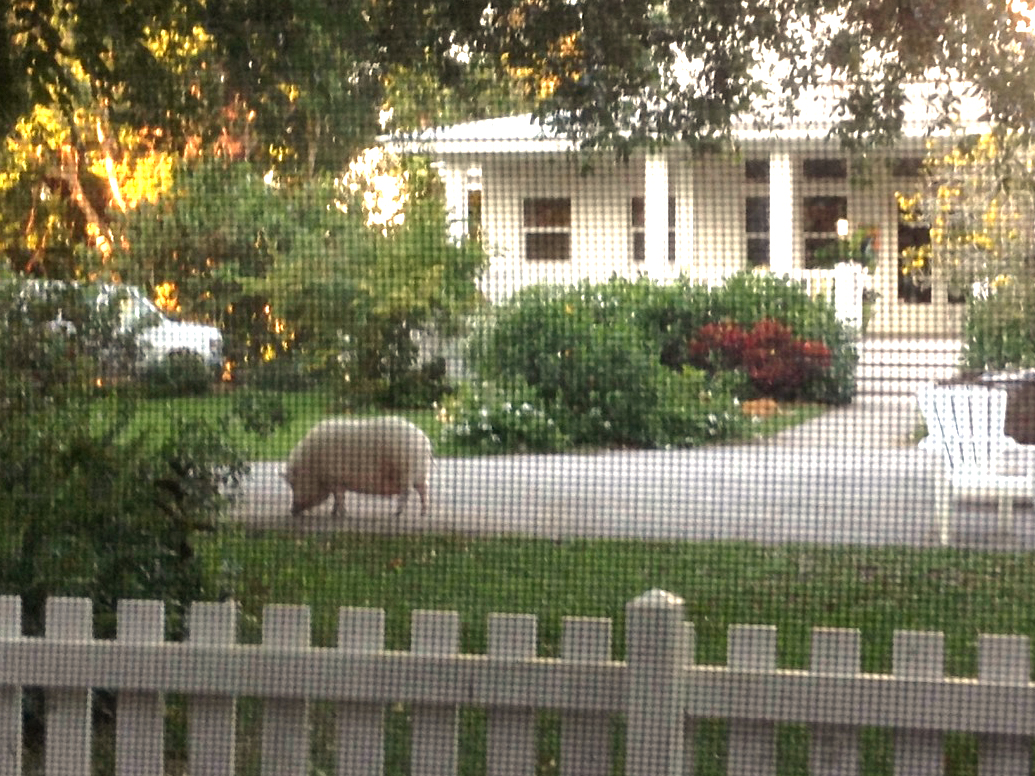
Ok, enough unpaid advertorials for AirBNB and on to the workshop!
https://www.instagram.com/p/Bge3neiD0u5
The first evening was a meet and greet – Look at that amazing wall hanging behind Cali! That’s the same piece that’s on the cover of her shibori book, and it’s all hand-stitched, almost as tall as me, and dyed such a deep indigo that it looked almost black! Each of the circles on that piece was the same size as the circle I made below…when I think of how long my one, lonely, circle took….and how many circles are on here…oh man, hours and hours and days and days and weeks of work must have gone into this piece! What a stunning inspiration:
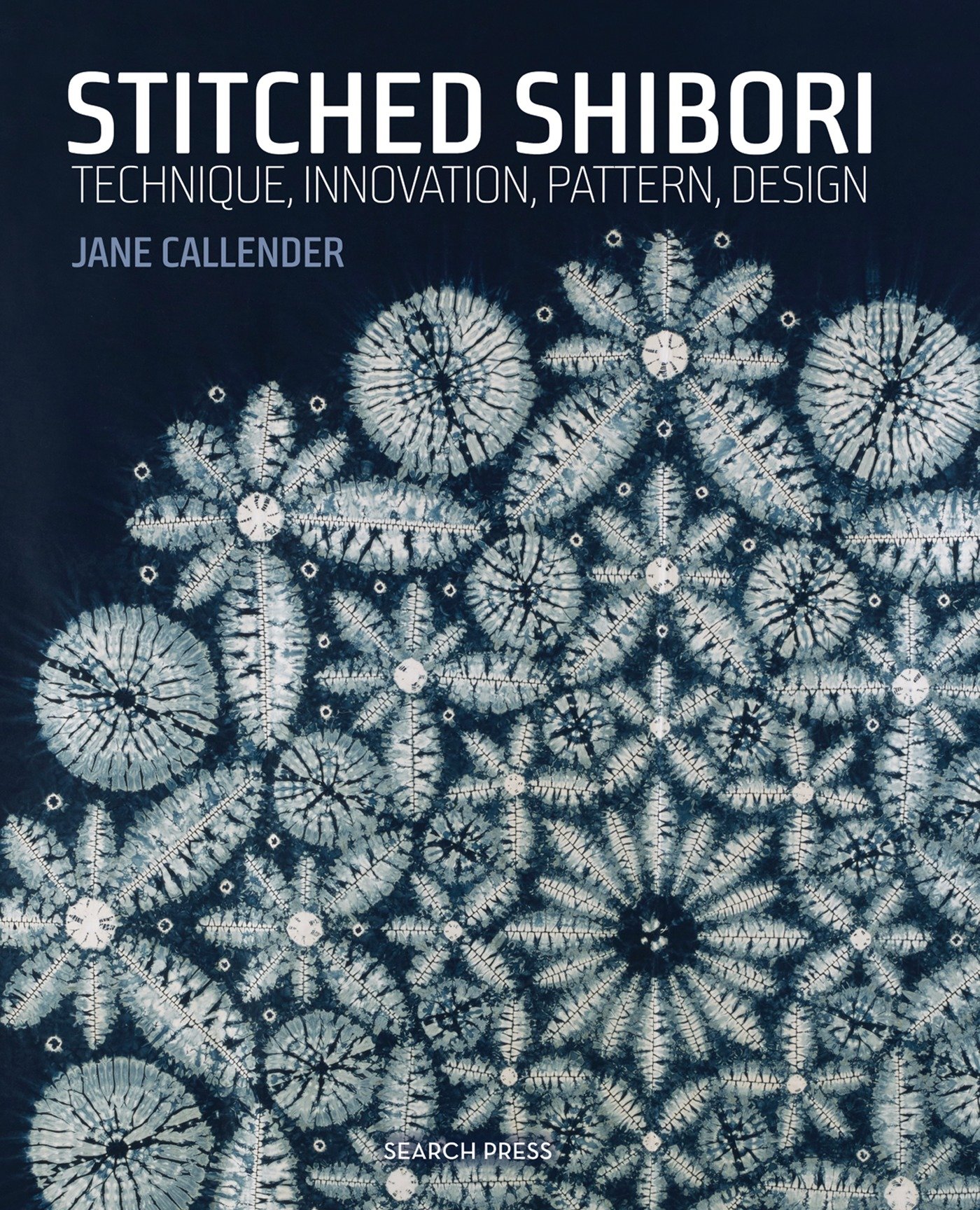 Buy it- Stitched Shibori: Technique, innovation, pattern, design
Buy it- Stitched Shibori: Technique, innovation, pattern, design
On the first day of class Cali started off by letting us know that in her class, she didn’t allow photos during demonstrations. She explained that these days the tendency is to take photos instead of written notes, but we don’t absorb information as well if we don’t write it down (this was recently backed up by a scientific study: “Taking notes by hand may be better than digital notes, researchers say”). Also, each of us had paid for the class, so it should really be “our time”, not time to worry about sharing on social media (haha! well at least I waited a few months to make a blog post…). Still, I found myself paying closer attention to the demonstrations and I think I might make the same rules if I ever teach classes again.
That being said, I AM a Millenial Child of the Digital Age, so I did get to sneak in a few photos…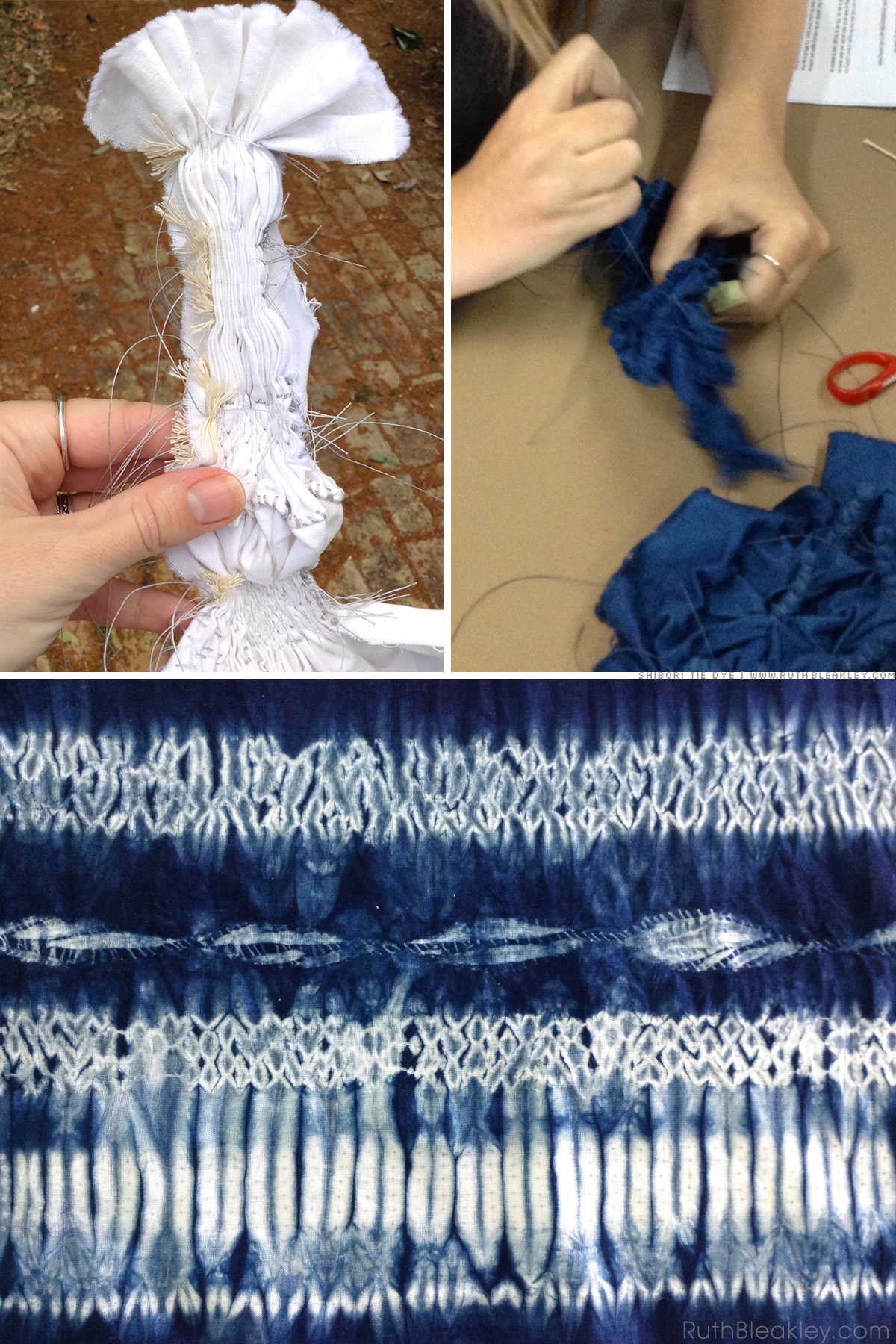
Basically, this class was about:
- hand-sewing white fabric for hours using a wide running stitch and leaving long tails
- pulling the threads very tight
- tying the tail ends off to make a bundle somewhat resembling a voodoo doll
- doing some chemistry magic to make an indigo vat
- gently dipping your fabric bundle in indigo 5-10 times over a few hours
- letting it dry completely
- rinsing it out
- letting it dry completely again
- picking out out all of the threads by hand without tearing your fabric
- washing the finished piece until no indigo ran out in the water (ha ha!)
- drying your fabric
- ironing your finished piece
No wonder this class was five days long! We used every minute of it! Here are a bunch of photos that I took or are from the officially sanctioned Aya Fiber Studio instagram:
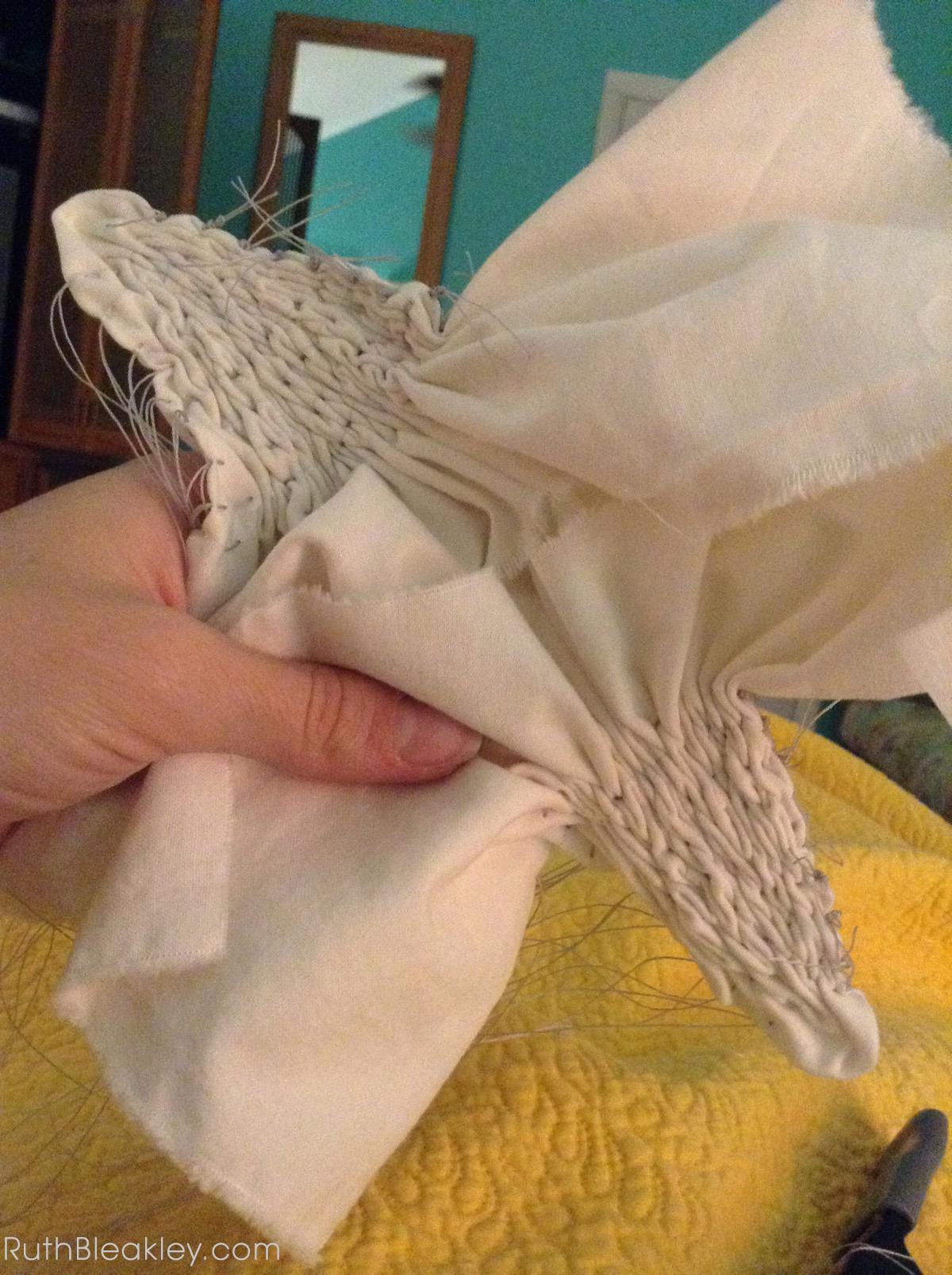
This voodoo bundle took me like 3 hours to finish sewing and tying off.
https://www.instagram.com/p/Bgn4uldlvq0/
(Yep, that’s me – I’m paying close attention! Also I have never seen pole-dipped fabric so have no idea what’s going on in this demo haha)
https://www.instagram.com/p/Bgn5Ec7FQVw
Some ladies from the class hanging their peices in between dips.
https://www.instagram.com/p/BhxZ6QrnfaL
A variety of strange voodoo doll things hanging from the line to dry. That small pipe in the blue bucket is mine, and made the piece that’s in my top photo! Same as the piece Cali is wrapping on the pipe as I look on with great confusion interest, two photos above.
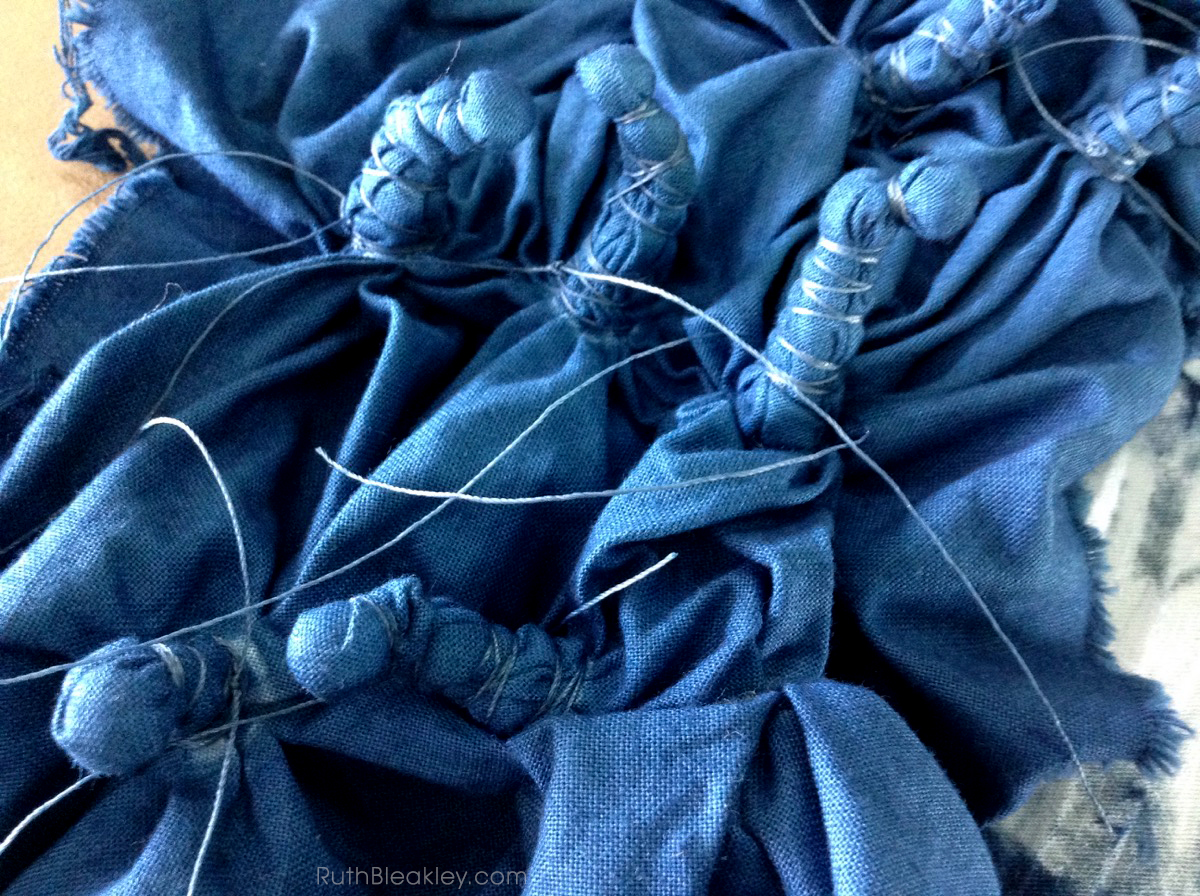
This is called spiderweb wrapping – this one wasn’t dipped very much, maybe only 4 times?
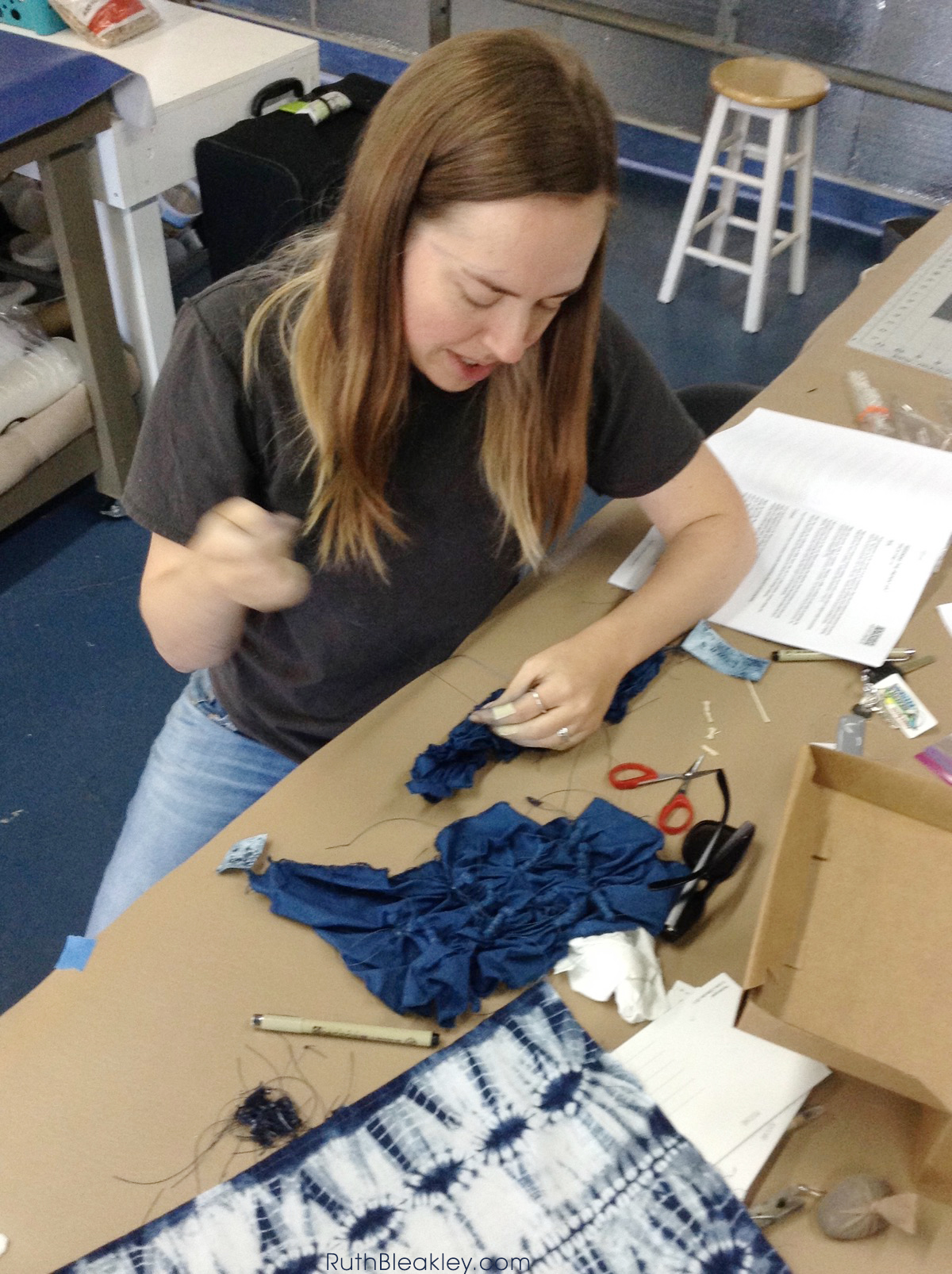
Here I’m stitching back into a piece where the thread broke – I put tape around my fingers so that the threads wouldn’t cut into them as I pulled my stitches tight. Also I usually wear much more colorful clothing, but I didn’t want to mess up any of my fun Florida clothes with dye, so black and grey shirts it is!
https://www.instagram.com/p/BghueBWD_fu
Break for lunch! This is right outside the studio – a beautiful harbor! non-Floridians should note that the studio is not air-conditioned (I don’t think?), so I’d recommend signing up for a winter class for your first visit to Aya Fiber Studio if you’re not used to the heat…my class in March was perfect weather!
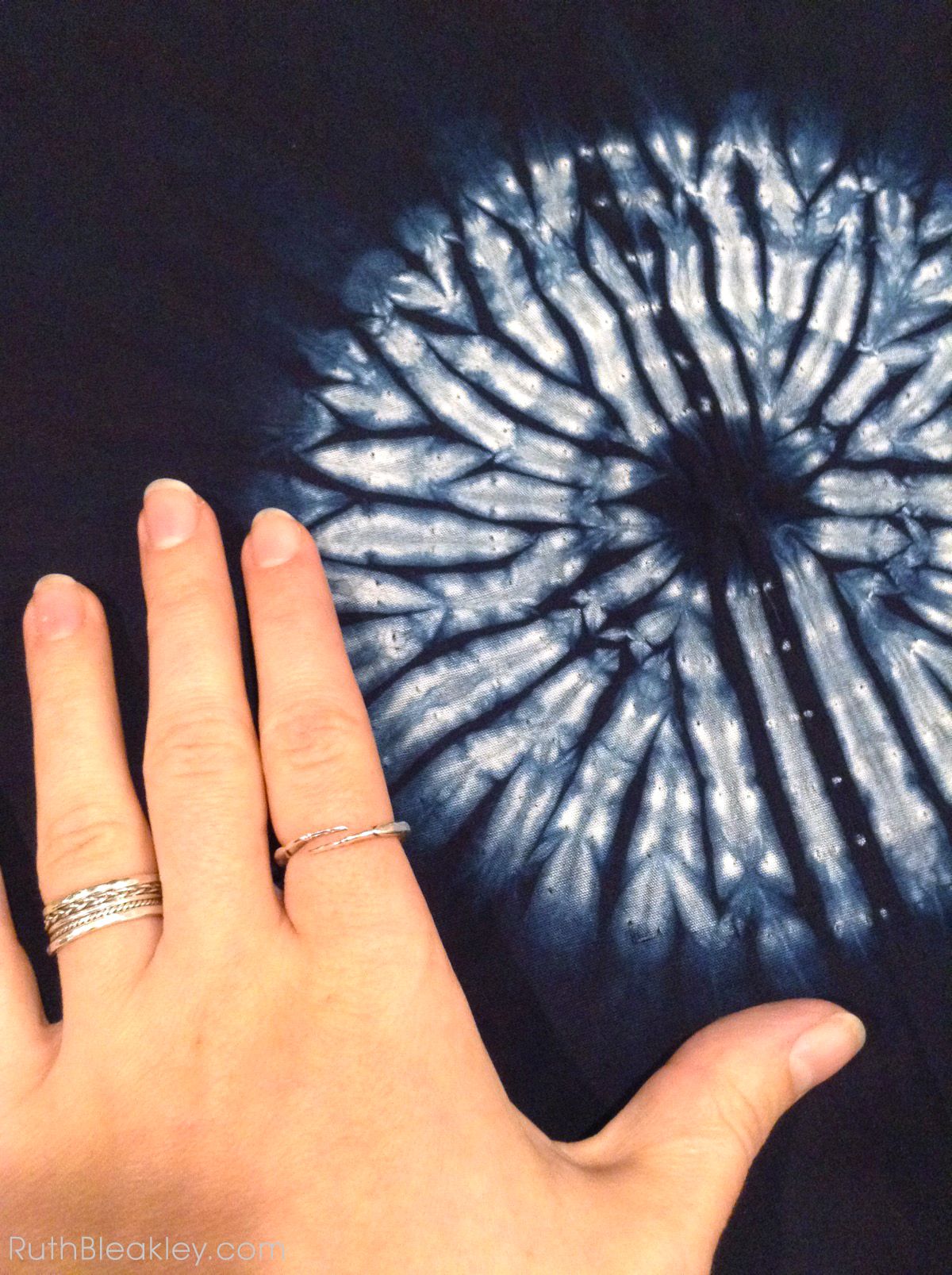
Look at this amazing circular piecel! This is a stitched circle, and I dipped this one in the indigo about 10 times. Let’s see, it took 20 minutes of oxidation MINIMUM between dips…that’s at least 200 minutes of dye time. Probably more like 300 minutes if you add in active dipping and hanging time…for one piece! I have a new appreciation for fabric makers. (also, cool silver crab claw ring by Silverella!)
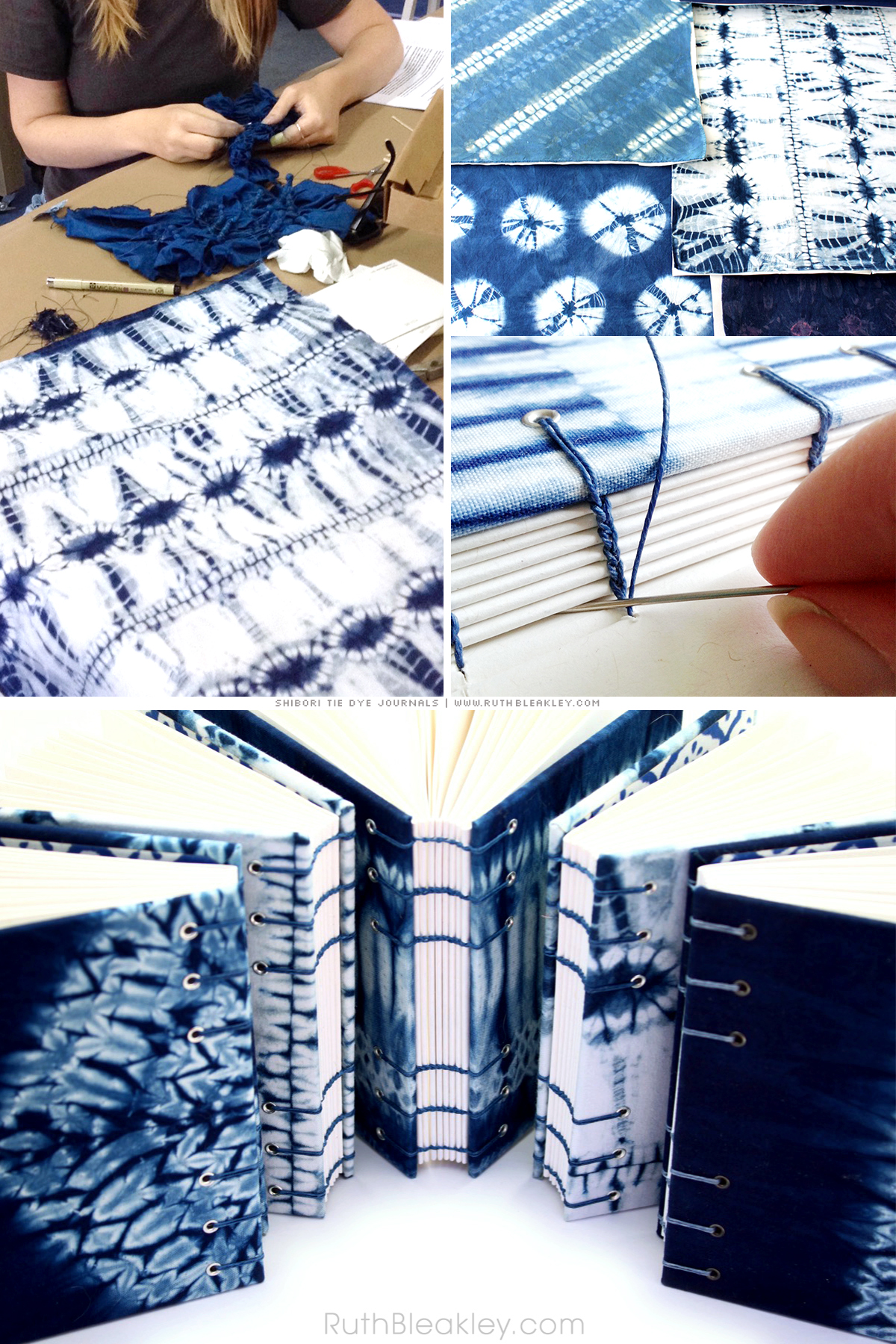
So last but not least….a sneak-peek at some beautiful shibori journals that I made with the fabric from my class! More of these to come, you can also see if I have any available in my online shop here: Shibori Journals For Sale
Overall impressions and lessons learned from the class:
- I love the surprise reveal that comes with picking a part your tie dye – who knows what it will look like??
- Also, patience is a virtue, and I ought to have dipped some of my pieces many more times, look at the deep, rich indigo that can be achieved with patience!
- Also, sometimes stuff comes out awful, but you can usually dye over it and might just end up looking cool!
- It wasn’t surprising to me that most (ok, all) of the women in the class were older than me, but I really like that because it shows me that as you get older, your skills will only increase, and most likely you’ll have more time and money to take cool classes like these!
- Quilters have mad hand-sewing skills. Seriously. It’s like I’d look over and they’d have a piece 1/10th finished and then 30 mins later the whole thing is completely covered with hand-stitching. wow.

https://www.instagram.com/p/Bgr8gOFlVlj
What a wonderful way to spend a birthday, learning something new and putting my hands to work! Cali, you were a wonderful and patient teacher and it was such an inspiration to see your work. Thank you to all the ladies in the class for singing “Happy Birthday” to me and to the ones who went out with me for dinner. You helped make my day away from home very special!
Check out upcoming classes at Aya Fiber Studio
Check out Jane Callendar’s classes at Callishibori Workshops
Are you a fiber artist? Have you taken classes at Aya Fiber Studio? Have you made Shibori? Leave a link to your website below, I’d love to check it out!
Thank you so much for reading my blog – if you enjoy bookbinding, check out my Pinterest board Handmade Books + Journals (which as of this writing has 10,190 followers!) and don’t forget to sign up for my newsletter:
this post contains affiliate links
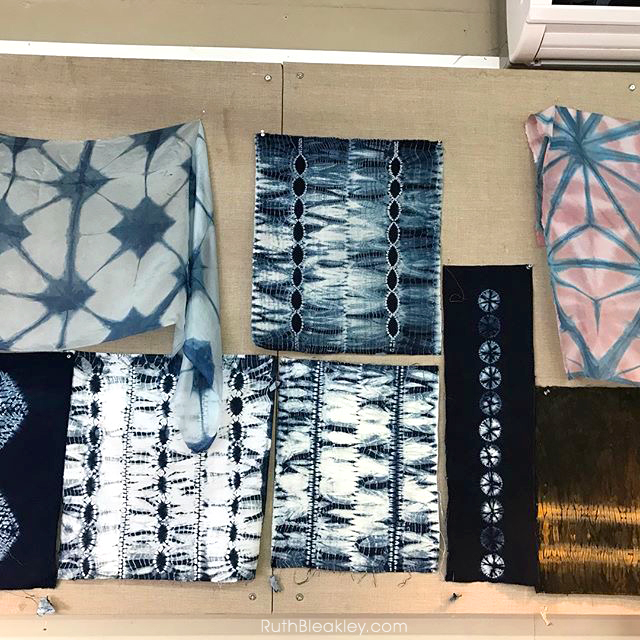
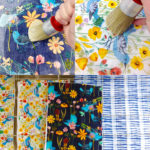

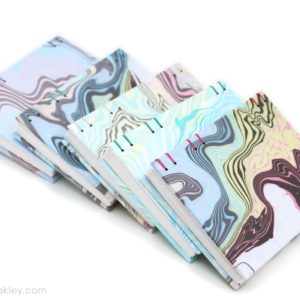
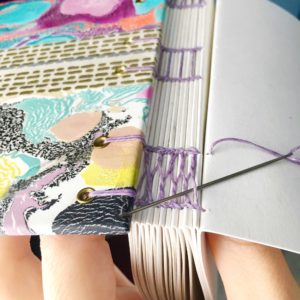
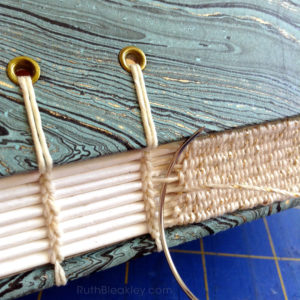




1 Comment
[…] journals I created using the skills I learned in two of the workshops I took in 2018 – Shibori Tie Dye workshop at Aya Fiber Studio in Stuart, Florida, taught by fiber artist Jane Callender and the Making Book Cloth Workshop in […]